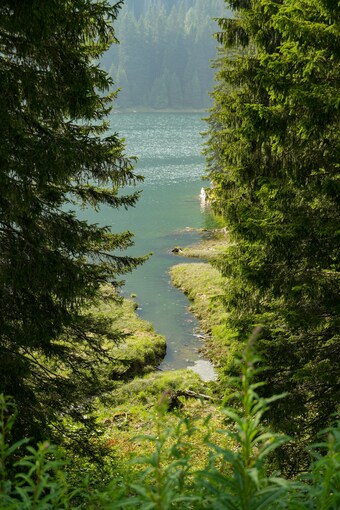UK Trees 🌿
Fir - (Abies species)

Fir trees, towering conifers, are commonly found in upland areas of the UK. Known for their symmetrical shape and evergreen foliage, they are a staple of British woodlands and a symbol of endurance in colder climates.
Fir trees (Abies) are some of the tallest and most majestic coniferous trees found in the UK, reaching heights of up to 60 meters. They are evergreen, maintaining their foliage year-round, and are easily recognized by their conical shape, straight trunks, and soft needle-like leaves. Fir trees are commonly found in cooler, upland regions, thriving in Scotland’s forests and other mountainous areas.
Fir trees play a significant ecological role by providing shelter for wildlife and contributing to soil stability. Their wood is valued for construction, paper production, and furniture making, known for being strong yet lightweight. Firs also have a prominent cultural presence, especially as Christmas trees, symbolizing winter and endurance.
As climate change impacts the environment, fir trees face both challenges and opportunities. Rising temperatures may threaten some populations, while others might benefit from the changing conditions. Fir trees remain an essential part of British forests, their towering presence a testament to the resilience of nature in the face of evolving landscapes.
Fir trees in context
| Tree | Max Age (y) | Max Height (m) | Est. number |
|---|---|---|---|
| Ash | 250 | 35 | 80 million |
| Beech | 350 | 40 | 10 million |
| Elm | 400 | 35 | 10 thousand |
| Fir | 500 | 60 | 1 million |
| Oak | 1000 | 40 | 120 million |
| Pine | 500 | 45 | 100 million |
Fir trees in the UK
Questions about Fir trees
How tall can Fir trees grow?
Fir trees can grow up to 60 meters tall, making them one of the tallest conifers in the UK.
What are Fir trees commonly used for?
Fir trees are commonly used in construction, paper production, and as Christmas trees due to their symmetrical shape and evergreen foliage.
What type of environment do Fir trees thrive in?
Fir trees thrive in cooler, upland areas, especially in regions like Scotland where the climate is suitable for their growth.
Why are Fir trees important for wildlife?
Fir trees provide shelter for wildlife, support soil stability, and contribute to biodiversity by offering habitat for various species.
Are Fir trees impacted by climate change?
Yes, climate change poses both threats and opportunities for Fir trees, with some populations struggling in rising temperatures, while others may benefit.